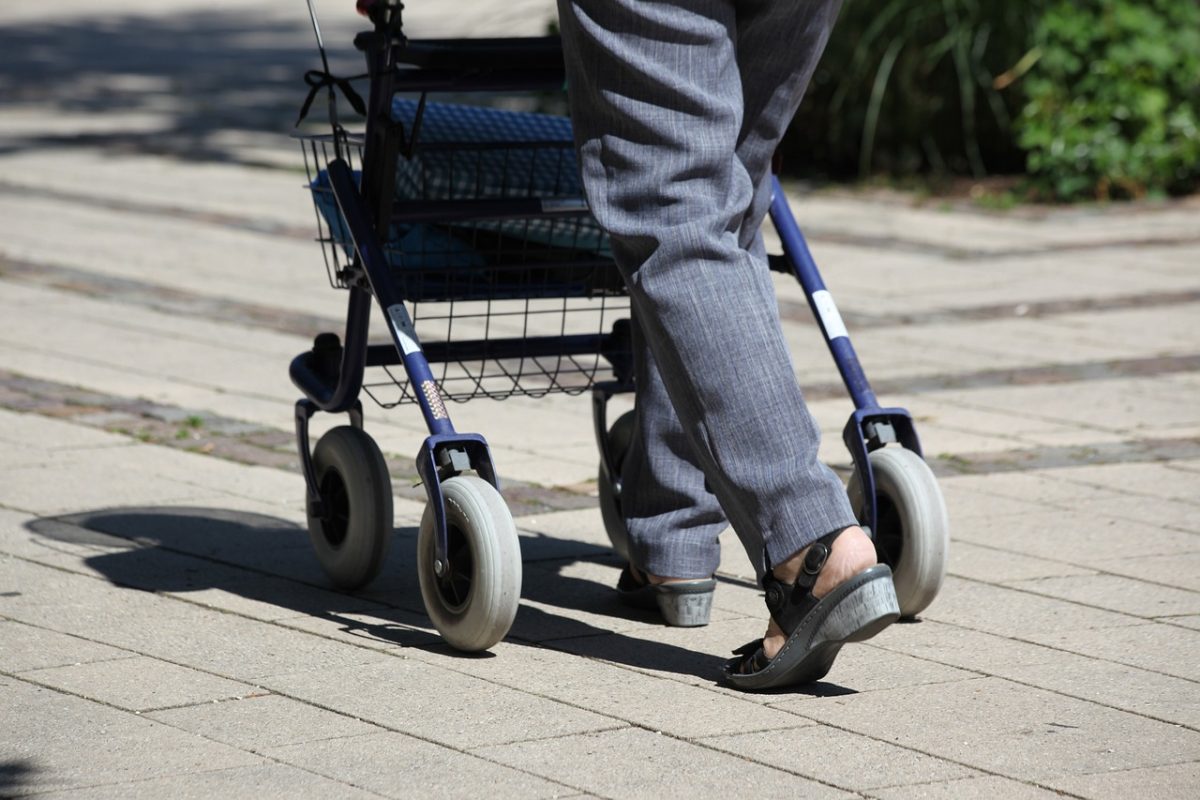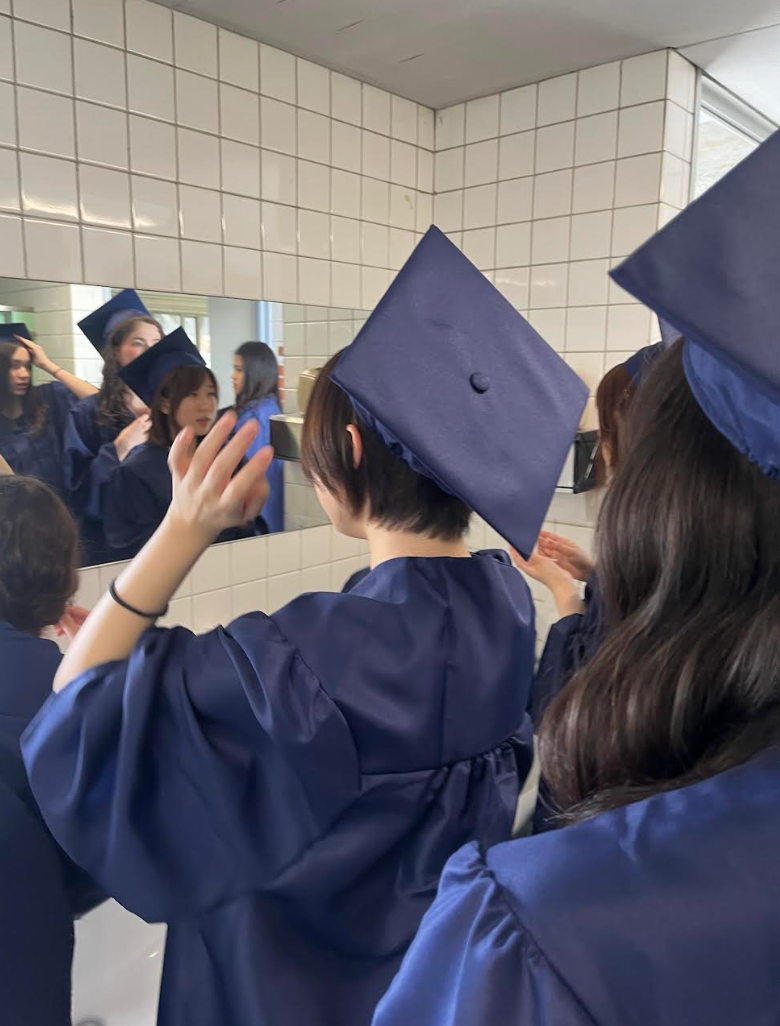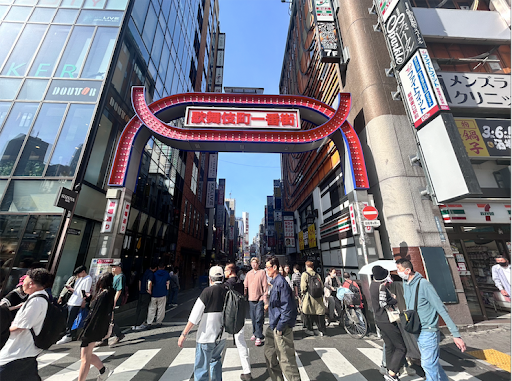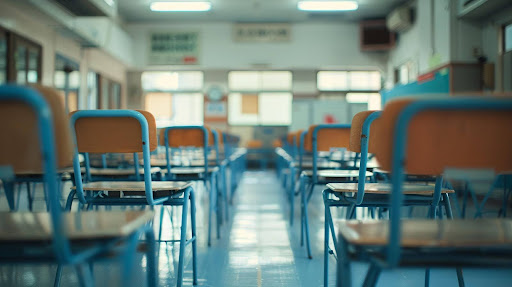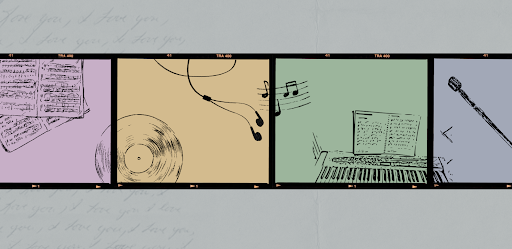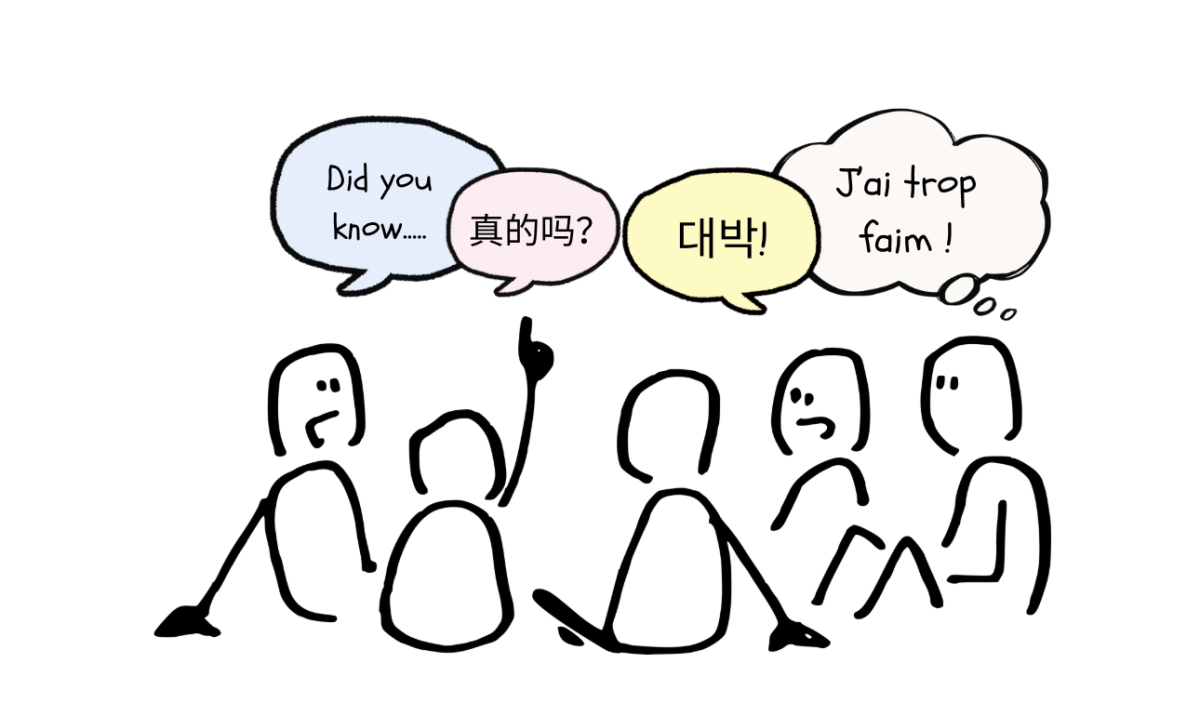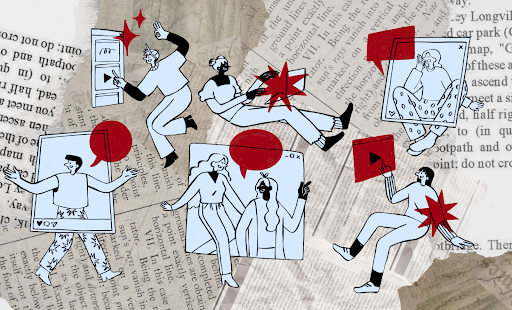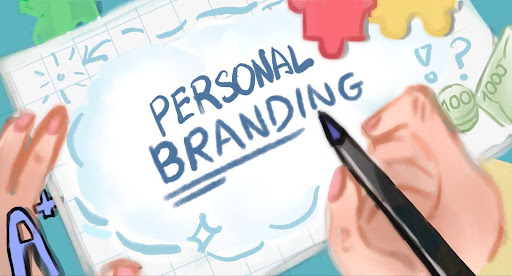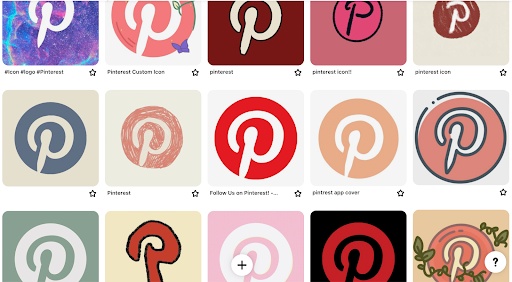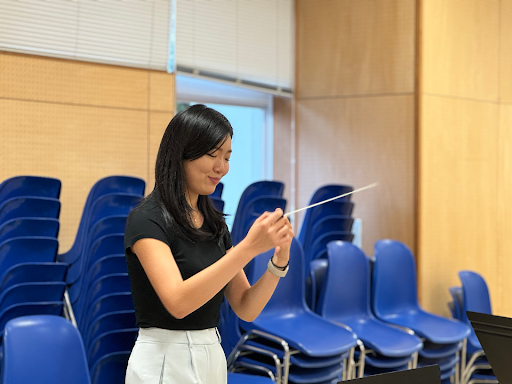From trend to neglect
How to recognize and avoid the pitfalls of binge shopping
Have you ever wondered why your trendy galaxy-printed backpack now sits neglected in the corner of your closet, or why you no longer bring your once-beloved good-smelling scribble pencil case to school every day?
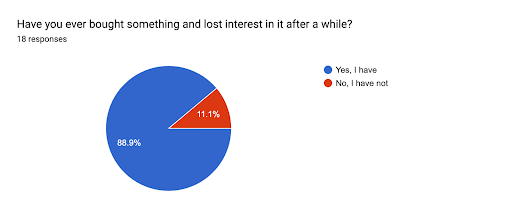 In a recent study conducted at the International School of the Sacred Heart, 16 out of 18 survey respondents, approximately eighty-nine percent, came to the realization that they frequently lost interest in the item they bought shortly after purchasing it. “It’s just not as fun anymore,” a respondent stated when she explained that she stopped using her purchases after simply a week and wanted to buy more products for fun, leading to her binge buying habit.
In a recent study conducted at the International School of the Sacred Heart, 16 out of 18 survey respondents, approximately eighty-nine percent, came to the realization that they frequently lost interest in the item they bought shortly after purchasing it. “It’s just not as fun anymore,” a respondent stated when she explained that she stopped using her purchases after simply a week and wanted to buy more products for fun, leading to her binge buying habit.
While the pandemic initially prompted people to save money instead of indulging in impulsive shopping, data from the National Library of Medicine have shown that the convenience of online shopping and the gratification of clicking the “Send to Cart” button have made online compulsive shopping a prevalent issue. Moreover, the sudden rise in inflation, with a 6% increase from 2022 to 2023, has made irresistible incentives of “50% off” and “Buy one, get one free” discounts more enticing than ever, fueling the impulsive shopping phenomenon.
But can the thrill of impulsive shopping and alluring discounts bring us lasting joy? Even if we experience a sense of satisfaction after swiftly emptying our shopping carts or purchasing an item at a significant discount?
Anna Quindlen says otherwise.
In her article “Stuff is Not Salvation”, she defines the reasons leading to America’s economic difficulties as a blurry line between what we want and what we really need. This is similar to our daily purchases. Various factors influence our purchases, causing us to acquire things that we don’t actually need. Quindlen warns that accumulating excessive items, driven by our desires rather than our necessities, not only fails to satisfy us but also leads to financial troubles by accumulating more than what is necessary.
This can be seen everywhere around us, as we often purchase unnecessary items on impulse, only to regret spending our hard-earned money later. Data from Barclaycard have shown that Brits have spent approximately £40.6 billion, equivalent to about £770 per person, on non-essential items such as an inflatable pub, a World War II mask, an antique diving suit, a piece of the moon, and a stretch rubber chicken. They claimed that there was no specific reason to buy those items. They just bought “in an effort to have more fun while at home” and make their stay-at-home experience more enjoyable. However, non-essential items in the boxes are typically left unopened and forgotten in the corners of our cabinets.
A similar trend emerged at the International School of the Sacred Heart. When asked how the pandemic has affected their purchases, 7 out of 15 respondents stated that during the pandemic, their purchases online greatly increased. On a scale of one to five, with one representing primarily essential purchases and five indicating a majority of non-essential item purchases, most survey respondents chose four on the scale, stating that a large number of their purchases are passing interests and not essential for a living. “I spent more time at home, so I buy more things to keep me busy,” one respondent said, while another admitted that she started purchasing more online without noticing how much she had already spent. Multiple respondents stated that during the lockdowns, they had no other things to do but go on their phones. One student’s explained that she started binge-buying because she was “too focused” on her phone and on getting something.

Compulsive shopping wasn’t only driven by the desire to alleviate quarantine boredom. The fear and stress induced by the pandemic, including city lockdowns, lack of COVID treatment, and overwhelmed hospitals, pushed people to engage in impulsive shopping for masks, toilet paper, and food, resulting in empty supermarket shelves just for a sense of security. An investigation by the National Library of Medicine found a “gradually increasing trend of compulsive buying patterns during an extended period of the Covid-19 pandemic.”
However, when the pandemic subsided, most of us came to realize that we had bought excessive amounts of masks and toilet paper. Multiple respondents acknowledged “excessive mask shopping” as one of their binge-buying tendencies, with one student admitting to having entire boxes of masks that their family could never finish.
Binge buying online is also a well-known remedy for stress. “When I’m stressed, or I’ve got loads of deadlines at work, buying things online is a nice release,” Emrana Khatun said in an article in The Guardian. She explained that buying something online “creates a small moment of joy” that alleviates the miserable mood of being stuck at home due to pandemic restrictions. “But [that small moment of joy] never lasts long,” Khatun added. Similarly, a respondent from the ISSH survey stated that she binge buys as a “treat” to herself to make her feel better, and another respondent said they binge-buy to just purely “enjoy the happiness of getting something new.”
Another influential factor driving unnecessary purchases is the internet. “I bought a paint-by-numbers kit,” Sarah Kane, a 26-year-old, said in the aforementioned Guardian article. “I looked on Instagram and saw that everyone else was buying it, and I did the same thing,” Kane confessed and pointed out that she purchased the item even though she doesn’t paint and doesn’t have the patience and concentration to complete it. After all her impulsive shopping, Kane admitted that originally, she thought buying all those things would make her feel better. “But it didn’t,” she said.
Kane’s situation resonates with students at Sacred Heart, where a significant number of respondents acknowledged falling prey to the allure of online trends and subsequently wasting money on unnecessary purchases. Out of the 17 survey respondents, nine of them claimed social media as one of the biggest reasons that influence their purchases. The majority of the respondents said that the trends caused them to buy multiple things, only to later realize that they neither needed nor suited them. “I bought LED lights back in 2020 because it was trending on TikTok, and everyone had them,” one student said, and another also explained that social media greatly influences her purchases as most of her purchases are from trends on social media. “I got interest[ed] in things [on the internet] that I didn’t really need and wasted money on it.”
The pandemic has brought a significant surge in compulsive online shopping, driven by the desire for a small moment of joy, stress relief, and the lure of social media. Unfortunately, this surge has resulted in fluctuating purchases of non-essential items, leaving most purchases unopened and neglected, ultimately leading to wasted money and cluttered homes.
Becoming more aware of our spending habits and making conscious decisions to purchase only what we need, rather than giving in to impulsive and fleeting desires, is an important yet challenging task. Anna Quindlen states that what we really acquire are “real things, things that matter,” useful things that can bring goodness and positivity into our lives and make our lives better. In contrast, Quindlen points out the abundance of “junk” we accumulate, such as “appliances, toys, clothes, and gadgets.”
The line between what we want and need is ambiguous, and overcoming the urge to engage in binge buying requires a conscious effort to reassess our purchasing habits and understand the clear line between our needs and wants. The influence of social media trends, with the convenience of online shopping and enticing discounts, has made it easy to fall into the trap of accumulating unnecessary items that bring only temporary satisfaction. However, the temporary joy derived from impulsive purchases is often followed by regret and the realization that binge purchases do not truly bring long-lasting happiness to our lives.
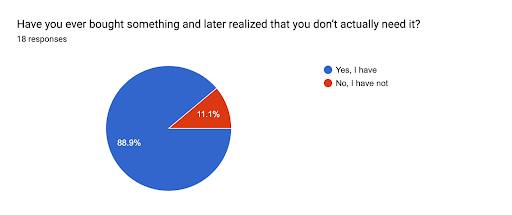 There are many ways to break free from the cycle of binge buying.
There are many ways to break free from the cycle of binge buying.
An article on Minimalism Made Simple suggests that one way would be to track all your spending and explains that acknowledging your purchases is a great “eye-opener” to impulsive shopping.
Another way to stop binge buying is to wait a week before purchasing something. Minimalism Made Simple further explains that “part of the thrill of compulsive shopping is seeing something you like and buying it on the spot.” This phenomenon is evident among the individuals at Sacred Heart as well. Around 89% of the survey respondents admitted that they realized they didn’t need something after binge-buying it without taking a long time to think about it. So, waiting a week before buying something allows us to clearly realize whether we actually want it or if it’s just a passing interest.
Ultimately, we must define our own line between what we truly need and the allure of short-term desires. Quindlen’s insights remind us that satisfaction comes from acquiring meaningful things that will actually be useful in our lives rather than an excessive amount of unnecessary purchases.
By becoming consumers that are more consciously aware of our purchases, we will be able to stay away from “desire untethered from need” and gain a more fulfilling and satisfactory lifestyle.

